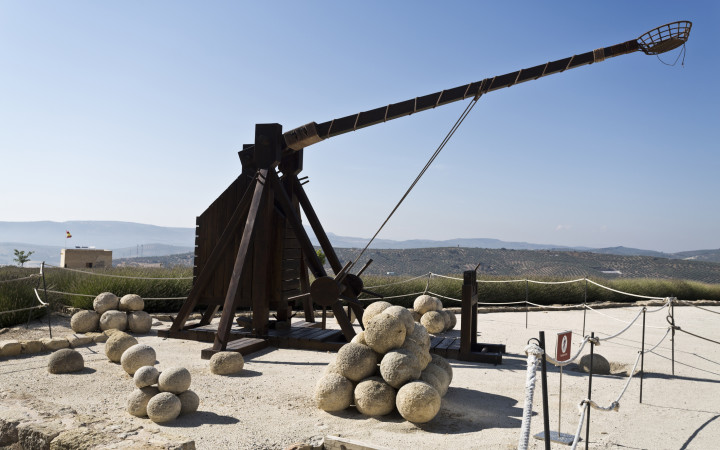Today’s Wonder of the Day was inspired by Dayon . Dayon Wonders, “What is a catapult?” Thanks for WONDERing with us, Dayon !
How would you like to fly? No, not in an airplane or jet. What if you could fly like a bird? Imagine coasting over a small valley at over 60 miles per hour (100 kilometers). You feel the wind around you. You can see far down to the valley floor. What will happen next?
Visit New Zealand to find out! There, you can go for a ride on the Nevis Catapult. It’s the world’s largest human catapult, located in the Nevis Valley. Built by AJ Hackett and Henry van Asch, it’s the newest addition to bungee jumping.
Once you’re strapped into the Nevis Catapult, you might get nervous. After all, you’re standing on a cliff’s edge, about to fly over a wide valley. But don’t chicken out! You’re in store for quite a treat. The catapult is about to hurl you 500 feet (150 meters) through the air.
The Nevis Catapult is just the latest in a long history of catapult inventions. We’ve used the catapult as a military weapon for a long time. Its earliest form was the ballista. The Greeks and Romans used this weapon. It shot arrows, darts, and stones. The ballista looked a lot like today‘s crossbows.
Later, medieval armies used another catapult called the trebuchet. This weapon threw objects from the end of a long arm. It had the most accurate aim of all the catapults of its time. The trebuchet was useful for throwing objects long distances. Armies often used it to attack enemies from afar.
The Chinese mangonel catapult used an arm with an attached bucket. Soldiers could load boulders or explosive devices into the bucket. Then, they launched them at enemies. This weapon spread to Europe in the 6th Century CE. The mangonel’s aim was less exact than the trebuchet. However, it was better for toppling castle walls because it could throw objects at lower angles.
Do these weapons sound different from the human catapult in New Zealand? They certainly look different and serve different purposes. However, the basic science behind how they work is the same.
All catapults rely on energy. They use the forces of tension, torsion, and gravity. These forces work to make potential energy. That means the catapult stores the energy until it is released. Upon launch, that energy turns into kinetic energy. The energy is given to the launched object, whether it’s a rock, explosive device, or human being. It’s a lot like how roller coasters work!
Does launching from a catapult sound dangerous? Many would think so! However, the creators of the Nevis Catapult worked hard for years to make sure it would be safe. When it opened in 2018, the Nevis Catapult had the highest safety rating. According to its makers, it’s “as safe as it can possibly be.”
Do you want to fly over the Nevis Valley one day? Is there another place you’d like to catapult over? Now that the Nevis Catapult is a reality, the possibilities are endless. You don‘t have to be Evel Knievel to take extreme leaps anymore. You just have to take a big breath and strap in!
Standards: NGSS.PS2.A, NGSS.PS3.A, NGSS.PS3.D, CCRA.L.3, CCRA.L.6, CCRA.R.1, CCRA.R.2, CCRA.R.10, CCRA.W.1, CCRA.W.2, CCRA.W.8, CCRA.W.9, CCRA.L.1, CCRA.L.2, CCRA.SL.1, CCRA.SL.2




